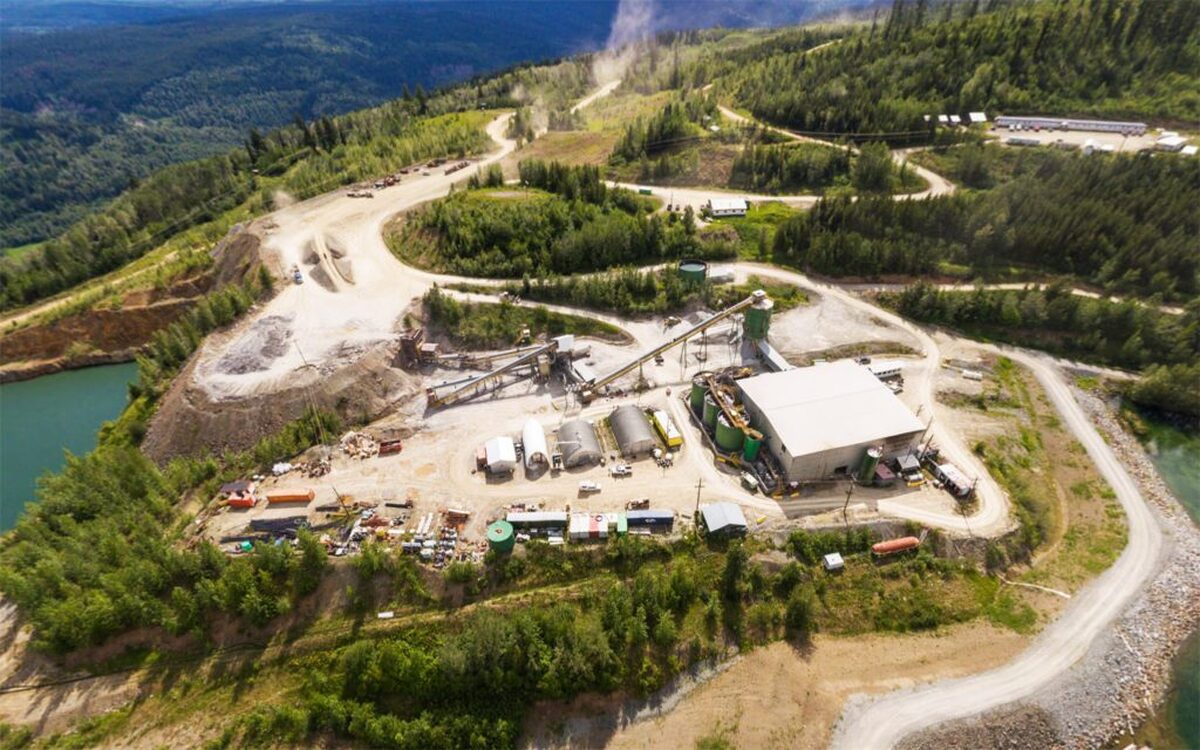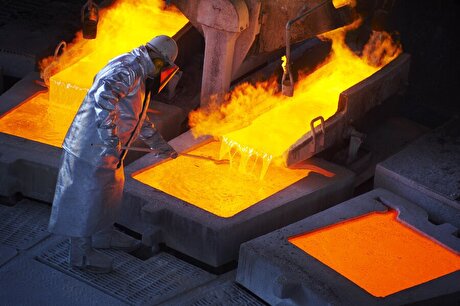
Yamana’s Peter Marrone on how gold companies can find value
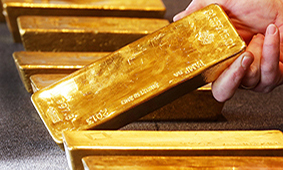
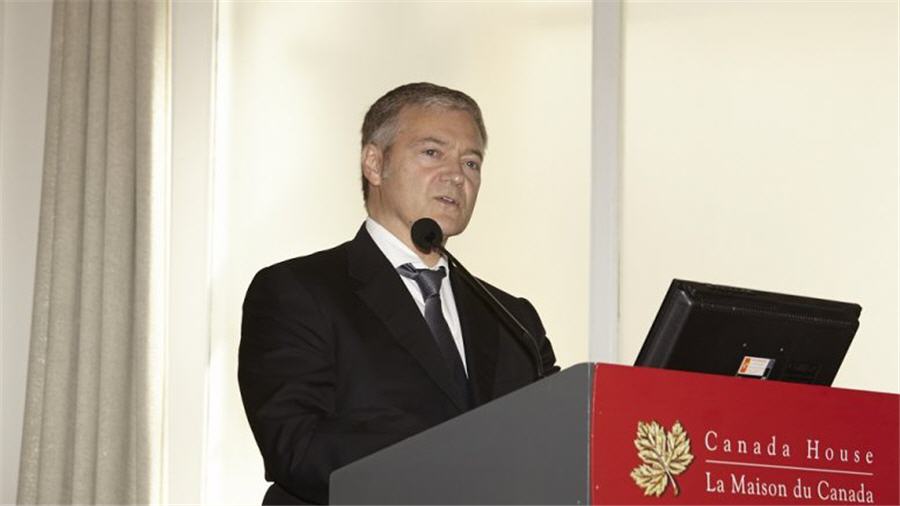
The starting point is geographical or jurisdictional focus. From the very beginning in 2003, when this company was formed, we said we’re going to be an Americas-focused company.
At the time it was probably not clear to people, because we had only one small producing mine in Brazil. A lot of people scratched their head and said, “But isn’t that just Brazil?”
But since then, in the last 15 years, we’ve gone from Brazil into Chile, Argentina, and now into Canada.
At Yamana we have a high-quality portfolio with long life assets.
We look at the life of assets not just in terms of what’s immediately available on proven and probable reserves, but we also look at what’s the potential for increases in proven and probable initially with resources, and where we don’t have resources then where we have mineralization or prospects that will increase that.
Interestingly our newest mine, Cerro Moro in Argentina’s Santa Cruz province, has about 6.5 years of mine life. But it’s an epithermal vein system with 32 identified targets. It is small open pits and underground, very rich grade at more than 11 grams per tonne for gold and 650 grams for silver.
I can’t say to you that it’s a long life asset. But I can say to you that there is an excellent opportunity here for us to expand the life of mine of this project. It reminds us a lot of El Penon in Chile, and El Penon at about this stage in its development in 1999 to 2000, it had about 1.5 million ounces. And if I look at gold equivalency between silver and gold in Cerro Moro, [today] it’s about 1.4 to 1.5 million ounces.
But in its life, El Penon has produced more than 5 million ounces of gold, and over 130 million ounces of silver. And in 2007, it had seven years of mine life and in 2019, it has 17 years of mine life. They are very prolific epithermal vein systems.
And that’s what we mean by long-life assets, not necessarily identified today, but clearly where there’s a prospect to be able to do that.
Coming back to jurisdictions, I don’t want to leave you with the impression that there are countries that are not better than these countries or that wherever you might be mining is not a good place to be mining.
I was discussing this morning [in mid-May] with a gentleman the prospects of going into Africa. I’m not sure I know where the DRC is entirely, but I know that it’s somewhere in Central Africa. It is not something that fits our portfolio. It’s not something that fits what we’re doing. I’m not saying that it isn’t a good place to be mining, but what we look for is places that have mining certainty.
Often, I’m asked about Argentina. Here’s a country where a former president wants to become a vice-president, a country that has very significant fiscal imbalances, has borrowed money from the IMF, has defaulted before, and probably will default again. It goes through these trials and tribulations.
But no one can deny that even in a country that has those fiscal challenges, it has an established rule of law and code of conduct for mining. You don’t run the risk that you wake up one morning looking at your breakfast table wondering how great the day will be, only to learn that somebody has made some proclamation that says, I’m expropriating one asset or another, or I’m doing the following things that are not particularly good things.
We like to be in jurisdictions where there’s a mining friendly and somewhere there’s a mining pedigree, where there’s a tolerance for mining. And certainly, Canada, Brazil, Argentina, and Chile are countries that check those boxes of where we want to operate.
I’m not saying to you that we’ve always been consistent, but certainly we have a long track record of consistency. We’ve been very good over the years of being able to translate what’s in the ground into production, and production to cash flows.
We’re looking at how to get better on generating free cash flows. You heard in the discussion this morning how that’s becoming increasingly more relevant. But a long track record of delivering on production and cost goals. And interestingly, in the last several years, certainly under the management of Daniel Racine, our president and chief executive officer, formerly our COO, we’ve not only been able to deliver, but also we’ve been able increase our guidance mid-year and then beat that guidance as well.
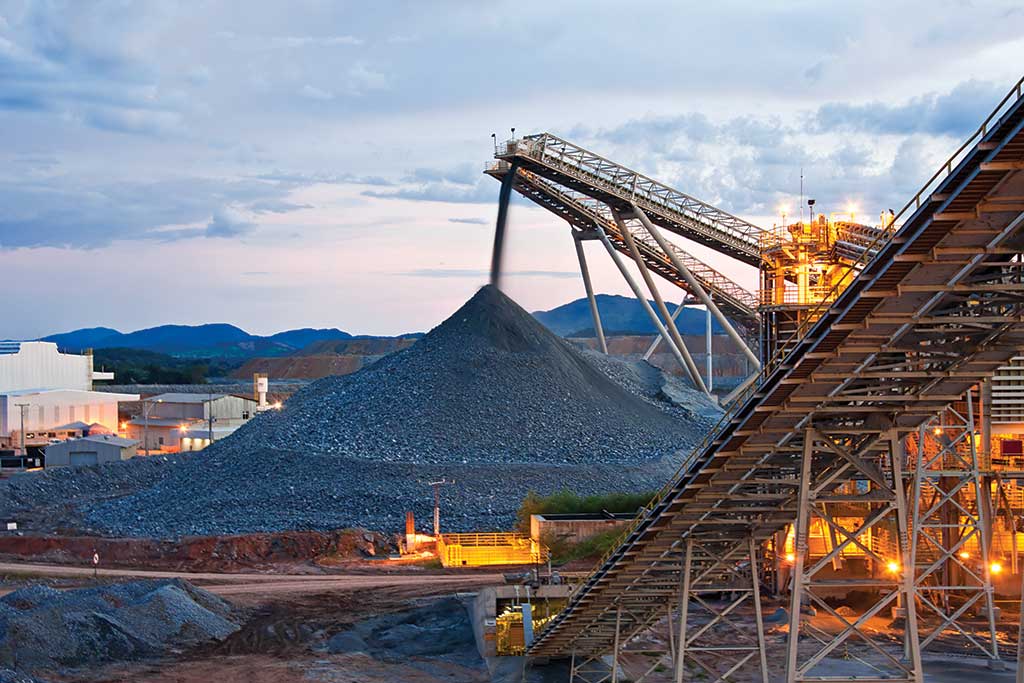
Yamana Gold’s Chapada copper-gold mine in Brazil. Photo by Yamana Gold.
Diversification is important. We certainly like precious metals. We do still have — soon we will not have — a copper mine. That’s our Chapada mine in Brazil. We’ve agreed to sell that mine. We’re getting far more than fair value for that asset.
Part of the reason for this action is we were looking to strengthen our balance sheet.
In 2014, this company hit a bit of a briar patch. We stumbled. We had a couple of development stage assets that did not go entirely to plan and what made it worse is that we then had to manage those assets.
Ultimately, we sold those assets and then we had to clean up the balance sheet aftermath of all of that. We borrowed on our billion-dollar revolver, and two years before we had zero borrowed on it. And at the end of 2014, we had $410 million borrowed on that revolver and that put a bloat on the balance sheet of the company.
As you are aware, that often creates limitations on the financial flexibility that’s available to a company.
Selling this asset at more than fair price, roughly a billion dollars of total consideration, $800 million upfront completely cleans up the balance sheet. It breaks the back of that debt position. It brings the net debt to EBITDA to a very, very manageable 1.5, and then with free cash flow that we’re generating and several other initiatives that are in front of us, in the next year and a half to two years, we intend to bring that down to below one turn of EBITDA.
But more importantly, what it does is it gives us financial flexibility to pursue the goals of increasing ounces in the ground, increasing production, and increasing returns to shareholders.
You’re aware that on announcing that deal, we’ve already doubled our dividend and our expectation is that we can probably continue with that as well.
The improvement in the balance sheet, that alone generates about $105 to $107 million of free cash flow in the next three years just by the interest saving that we have.
We decided that some of that, because we are generating free cash flows and still investing into the ground, some of that should go back to our shareholders.
We started with a light version of that with a doubling of our dividend.
As one of our shareholders mentioned yesterday, “It seems to me that you can probably do that again and again.”
The answer is we probably will, but we’ll be prudent and disciplined once we close the deal.
As we increase our cash balances, we’ll come back to the question of, “How do we further increase shareholder returns by delivering cash to shareholders?”
That could not have happened without some of the changes that have occurred in the company in the last four or five years. And one of the themes I hope I can communicate to you is: don’t stay static, make changes where the changes are necessary.
As [Iamgold president and CEO] Steve Letwin said this morning, “If something isn’t working, change it.”
I’m fiercely loyal. I believe in loyalty.
But sometimes it’s difficult because sometimes what we have to do is say those that are running the company or certain aspects of the company, require a change. Notwithstanding the loyalty, at some point you have to do the right thing and make those changes.
Four or five years ago, we embarked on that path. In that period, we’ve completed several succession plans. We took a succession plan for the head of exploration, for our chief financial officer, then for our chief operations officer.
Most recently, our chief operations officer has completed a succession plan with myself as a founder and chief executive since 2003. I took on the more limited role of executive chairman, and he took on the role of chief executive officer.
We’ve added to our board of directors so that we can create more depth.
We’ve removed an entire layer of management in the company. We’d become bloated — we had too much management, too many vice-presidents.
I’m not saying this by throwing eggs. I’m not casting aspersions, but it was a South American model of many layers of management, and consultation, and discussion.
Instead, we took a Quebecois model, which is get the right general manager, and he reports directly to a senior vice-president or the chief operations officer. It streamlines the organization, allows for decisions to be made very quickly, and we moved from there.
So there have been significant improvements to the management.
Incidentally, that took our general and administrative expenses from $142 million five years ago to roughly $80 million today, and we think there’s further improvement that can come from that.
We’ve upgraded our portfolio.
One thing that’s important to communicate, I am only 59 years old. I hope I don’t come across as looking old to you or sounding old to you. I don’t know that I’ve got enough experience or age to be able to say, “Here are the lessons learned.”
But if I can, one of the lessons that we’ve learned is you cannot manage a company that has too many assets to manage.
I think the sweet spot for a gold mining company is between five and eight assets. Go above that and it becomes very difficult to do.
So I applaud some of these mergers that we’ve discussed today, where they’ll be managing 15 or 16 mines or as much as 20 to 22 mines. God bless, because that’s going to require a lot of effort.
And if that means that we’re not as capable as some of the other companies, we like the capabilities that we have. We think that five to eight mines is the sweet spot for the number of mines in a portfolio.
We’ve sold some of the mines that were in excess of that, some of the smaller mines, and we’re concentrating on those core mines with five producing mines today.
Part of the success of a company comes from being able to build assets effectively.
We’ve not always succeeded at doing that. As I said in 2004, we stubbed our toe. Heck, we stuck a sword through our foot. We had a couple of development stage assets that did not go entirely to plan.
So we changed how we manage the development of assets.
In the case of Cerro Moro, we built it on time and on budget in a part of the world, and in a part of Argentina that is challenged in development of assets.
But why we were successful at doing that is that we decided that before we’re putting a shovel into ground, before we’re spending $300 million of capital, which is the capex of this project, we completed more than 87% of the detailed engineering.
We went from a feasibility study to detailed engineering, and completed that amount of detailed engineering so that it gave us more competency in terms of how long it would take to develop the mine and the cost of development.
I’m happy to say that that has been a success, and it is the path forward.
If it means that it takes an extra six or nine months to develop something, we would rather take that time. That’s an important lesson we learned in terms of building high-quality operations.
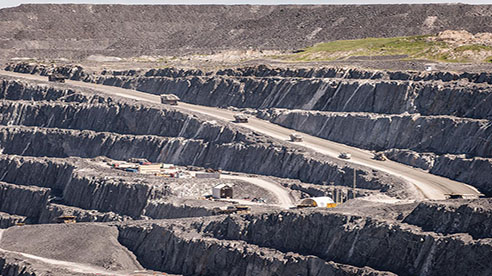
We elected to sell our Chapada copper-gold mine and it was a difficult decision for us.
I go back to what I said about loyalty. We developed this mine. Those of you who remember Yamana in 2003 to 2007, we put it into production in early 2007.
We were told it’s a low-grade deposit, amongst the lowest in the world.
We were told that it can’t be developed, and that we can’t possibly do it for $240 million with 16 million tonnes of throughput per year.
And we did all of that.
What was overlooked was that the strip ratio was less than one to one. So the strip-adjusted grade was actually in the top one third, perhaps quartile, of the copper-gold assets in the world. It was difficult for us to sell it because we’ve developed it. We’ve nurtured this asset.
Our general manager when Danielle and I were there a few weeks ago [in mid-April], reminded us that he joined the company in 2005, and people did not believe that this asset could be built and we built it. He reminded me that there was a vision and that vision led to the development of this asset.
Maybe a lesson is don’t let people tell you that you can’t do it. Just go on and get it done. But he also said he met his wife there. They have three children, so there’s a personal side to it that we can’t overlook. We’re business people, but we can’t overlook the personal side.
So it was a difficult decision for us, but we’re getting more than fair value for it. It is going into proper hands to continue to manage the asset and the people there effectively, and it does a world of improvement to our balance sheet.
With that improvement to the balance sheet, we create financial flexibility, it enhances our free cash flow as I mentioned, significantly reduces our debt, allows us to be able to enhance our shareholder returns, rebalancing the portfolio more to precious metals, and allows us to be able to get this level of production increases.
This blue bar you see is really important because it is an extra 150,000 oz. of new gold production that will come very inexpensively and it will come from existing operations.
Pit activity at Agnico Eagle Mines and Yamana Gold’s Canadian Malartic gold mine in Quebec. Photo by Yamana Gold.
One further lesson learned is the best new ounce is an ounce that you discover and mine at an existing operation. And so that 150,000 oz. comes from our Canadian Malartic mine in Quebec, and from our Jacobina mine in Brazil.
In 2013 and 2014, we throttled back the Jacobina operation, when it was producing 76,000 oz. per year. We were told — and there’s actually a person in this room who said — “Why don’t you sell it? It’s not core.”
And yet, we looked at it and said, “There are millions of ounces that are not yet discovered in this deposit, and we need to learn how to mine it more effectively.”
And look at the growth of production over the course of these years, from 76,000 oz. to last year’s 145,000 ounces. We’re now mining at 5,800 tonnes per day. The plant is at 6,500 tonnes per day, and requires some modest modifications — pipes and motors, really. We’re already mining faster than we’re processing.
There will be no more than a couple of million dollars to put that into development by next year. It gets us to a production platform that is about 170,000 ounces.
We now have a new plan that takes it to more than 225,000 oz. with a plant increased to 8,500 tonnes per day.
However — and this is where it’s important to look at the what-ifs and the howevers — we also looked at it and said, “But the grade trajectory of this asset in the last several years has been going up.” We had a grade increase last year, the year before. We will have another grade increase this year.
Every new zone of these reefs that we’re discovering, is coming in at higher grade than reserve grade
So the trajectory for grade is actually going from the 2.34 grams we’re carrying today closer to 2.6, so as we get to that 2.6, the what-if is staying at 6,500 tonnes per day, not spending the capital to go to 8,500 tonnes per day.
That takes us to a production platform of over 190,000 ounces.
Now, 190,000 ounces is the first part. The second part is we’re already carrying more than 13 years of proven and probable reserves. We’re carrying more than 2 million oz. of resources, another 1 million oz. of inferred resources, all at higher grade than reserve grade.
Clearly, this has been a resounding success for us.
We chose not to sell it, and we’re happy we didn’t. It has become one of our more prolific producing mines with a very long life. We estimate certainly more than 15 years, and it could be significantly longer than that.
Canadian Malartic is also one of these assets that we did not develop. We bought it in 2014, as you may remember. But in 2011 or 2012, we were being told that you can’t mine at 1-gram deposit in an open pit deposit in Canada — it isn’t going to work.
And look at how successful Osisko was and we’re very happy that we acquired Osisko in 2014. We’ve taken the throughput from 48,000 tonnes per day to 55,000 tonnes per day.
We’re now developing the higher grade Barnat deposit. But more interestingly, is what’s been discovered with Odyssey and East Malartic. These are underground zones rather than open pit. We see the potential for another 150,000 ounces. So our 50% would be another 75,000 oz. at very modest capital investment.
We had a vision in 2014. There were only eight drill holes into Odyssey at the time. Listen to the geologist who discovered it, because he’ll tell you what he thinks. And he said, “I think you’ve got a deposit here.”
Processing facilities at Yamana Gold’s El Penon gold-silver mine in northern Chile. Photo by Yamana Gold.
He was right. So we think that there’s an excellent potential for the increase in production and that will extend mine life also.
Cerro Moro, again, is a very high-grade deposit and it generates one of our better cash flows and free cash flows. Our objective in the next several years is to increase proven and profitable reserves, full stop. It doesn’t need anything else other than that, and we’re very confident that we’ll be able to deliver on that.
One thing that I didn’t say said about El Penon, is sometimes it is better to pull back on production, to improve the financial performance of an asset.
This mine was producing more than 220,000 oz. gold per year, and about 7.5 million oz. of silver, so on a gold-equivalency basis, well in excess of 325,000 ounces.
But we were also doing more than 50 km of underground development per year, $60 million per year in development, $30 million in exploration.
We throttled it back. We said, “This mine has done its share of the heavy lifting. Let’s pull it back to a 150,000 oz. gold, 4 to 6 million oz. of silver.”
It’s still an impressive mine at more than 200,000 oz. gold equivalent. But more importantly, because we’re spending one half of the amount on development and on exploration, we now generate more free cash flow from this asset with less risk than we did before we throttled it back about three or four years ago.
Let me highlight one final aspect of our portfolio. I think the market sometimes misses opportunities that are in a portfolio that are not producing mines.
We have five producing mines, and we have a raft of what we call strategic assets. The most advanced is Agua Rica. This is one of the larger copper gold molly deposits in the world. With 25 years of life, a very high-quality grade, it’s a production platform to have 370 million pounds of copper per year. But in the first 10 years, it would be more than 500 million pounds of copper per year — a very significant mine.
It also happens to have a next door neighbour, the Alumbrera mine, where the mine has just been exhausted. That’s 36 km away.
We’re a partner in Alumbrera, with a minority stake. We have 100% of Agua Rica.
We came to a conclusion, “Why don’t we integrate the two projects?”
Let’s not build a new plant. Let’s, by conveyor, take the ore from Agua Rica and take it to Alumbrera. That allows us to save hundreds of millions of dollars of capital costs and reduces the risk significantly.
We can use the current tailings facilities. We may be able to use the exhausted pit for tailings and possibly for waste. That 36 km by conveyor is not a challenge. Clearly there’s a cost associated to it.
But this is a project that is now at the development stage and we’ve advanced it by saying we’re not going to develop it as a $3+ billion, standalone project.
There’s an excellent synergy between what is already there as a plant and what we have as a deposit.
We’re delivering a pre-feasibility study [soon], and a feasibility study by this time next year.
In the integrated project, we have 56%.
And here’s an interesting question for you, maybe rhetorical, but how much do you think this asset is carried in analysts’ models, those analysts that cover this company?
Very, very good answers in the room. Zero.
So we certainly think that there’s a true value proposition here. It will be a very significant improvement to the overall value of this company.
One can assume that we will probably look to monetize all or some part of it, which will bring further cash into the treasury of the company.
Most importantly, I think where the value proposition is, is sticking to your knitting, being a significant or a dominant intermediate company, focusing on the quality of your portfolio and of the jurisdictions in which you operate, and become relevant in those jurisdictions.


Trump weighs using $2 billion in CHIPS Act funding for critical minerals

Codelco cuts 2025 copper forecast after El Teniente mine collapse

Electra converts debt, launches $30M raise to jumpstart stalled cobalt refinery

Barrick’s Reko Diq in line for $410M ADB backing

Abcourt readies Sleeping Giant mill to pour first gold since 2014

Nevada army depot to serve as base for first US strategic minerals stockpile

SQM boosts lithium supply plans as prices flick higher

Viridis unveils 200Mt initial reserve for Brazil rare earth project
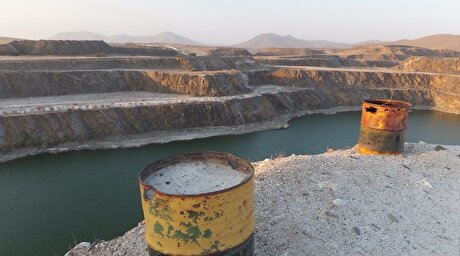
Tailings could meet much of US critical mineral demand – study
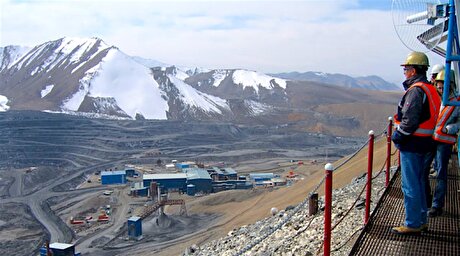
Kyrgyzstan kicks off underground gold mining at Kumtor
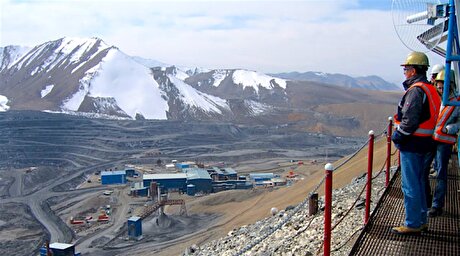
Kyrgyzstan kicks off underground gold mining at Kumtor
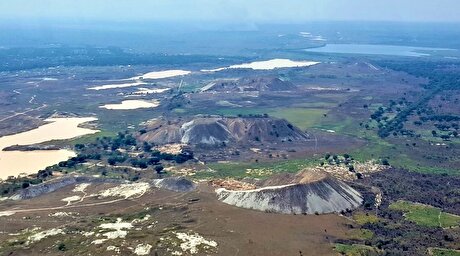
KoBold Metals granted lithium exploration rights in Congo
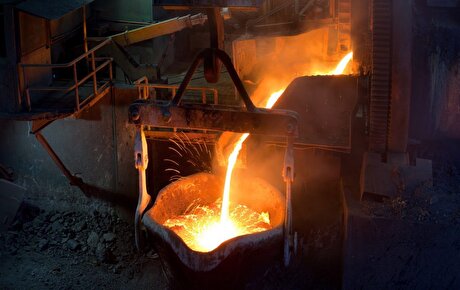
Freeport Indonesia to wrap up Gresik plant repairs by early September
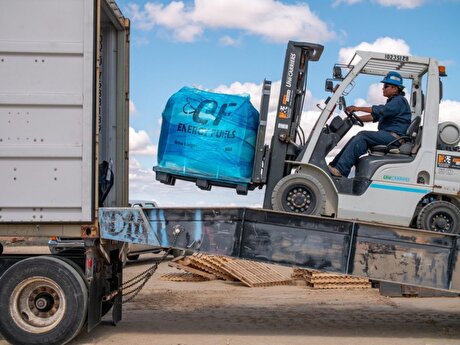
Energy Fuels soars on Vulcan Elements partnership
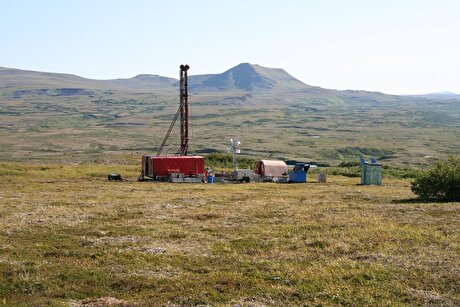
Northern Dynasty sticks to proposal in battle to lift Pebble mine veto
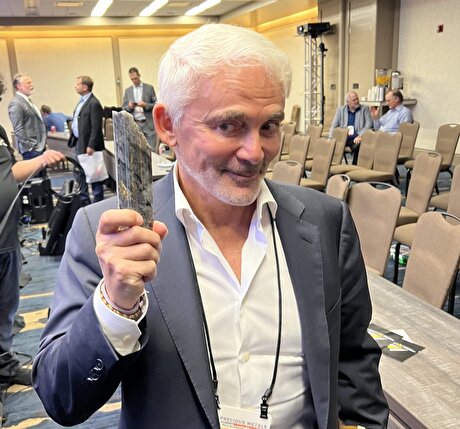
Giustra-backed mining firm teams up with informal miners in Colombia
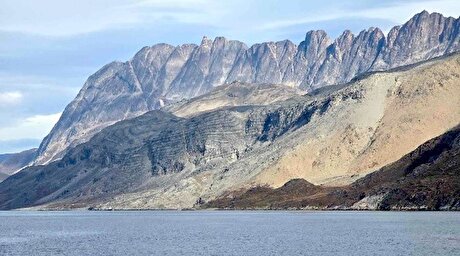
Critical Metals signs agreement to supply rare earth to US government-funded facility
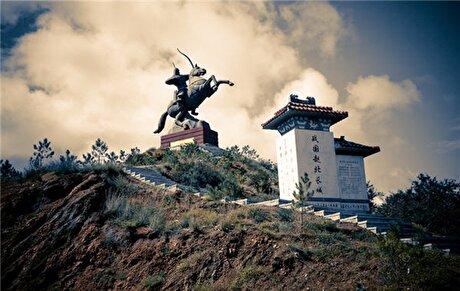
China extends rare earth controls to imported material
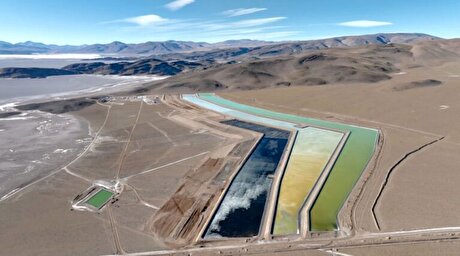
Galan Lithium proceeds with $13M financing for Argentina project

Kyrgyzstan kicks off underground gold mining at Kumtor

Freeport Indonesia to wrap up Gresik plant repairs by early September

Energy Fuels soars on Vulcan Elements partnership

Northern Dynasty sticks to proposal in battle to lift Pebble mine veto

Giustra-backed mining firm teams up with informal miners in Colombia

Critical Metals signs agreement to supply rare earth to US government-funded facility

China extends rare earth controls to imported material

Galan Lithium proceeds with $13M financing for Argentina project
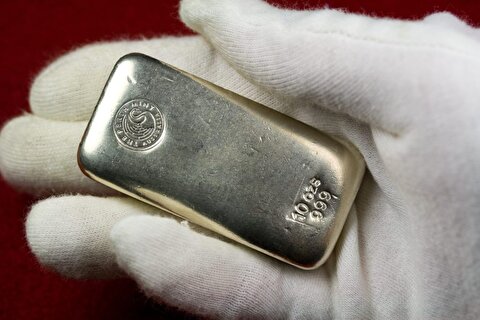
Silver price touches $39 as market weighs rate cut outlook

